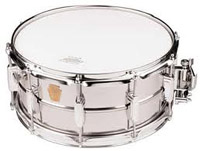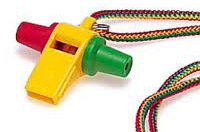About samba
Samba is one of the most popular styles of music in Brazil, played at the famous carnivals in Rio. Samba is performed entirely on percussion instruments and is loud and Vibrant. Samba is music to dance to.
Samba history
Samba, first appearing at the beginning of the 20th century in Rio do Janeiro, shows a remarkable combination of African, Native Indian and Iberian influences. Samba, in the carnival style, is played on percussion instruments which can be strapped to each musician, allowing the player to parade or dance as they please.
Having a distinct sound and vibe, samba is often regarded to symbolize racial and social harmony.
Samba instruments
 Tamborim (or Tam)
Tamborim (or Tam)
These are small hand held drums, very tight skinned, providing a high pitched sound. They are the basic instrument when starting to learn samba rhythms but often become one of the most complex instruments to play. Tamborims are played with multi headed sticks).
 Agogo Bells
Agogo Bells
These handheld bells that play two notes. Agogos can sometimes have up to four separate bells. Agogos are played with a single wooded stick and have a clear sharp sound that rings out over the drums. We also use cowbells in some songs.
 Snare
Snare
Lighter than normal kit snares with a more crisp sound (when tuned correctly!). Other samba bands also use purpose built snares, called caixas with the snare strings on the top. Snares are strapped around the waist and played with two standard drum sticks.
 Gansa/Chocalho - Shakers
Gansa/Chocalho - Shakers
The shakers provide an underlying pulse to the tune. Although they may look easy to play they require good technique and lots of stamina to play. Pictured is the loud metal type often used in Battucada style samba, but we use various forms including ones made of a large pumpkin covered in beads for Maracatu style samba.
 Repenique (or rep, pronounced "hep")
Repenique (or rep, pronounced "hep")
These are small drums, about the size of a snare, but much deeper. They provide the high rhythms within the tune, and are used for the call-and-response technique during the breaks. The leader will usually play the rep. These are strapped over the shoulder or around the waist and are played with either one wooden stick and a hand or two light plastic (whippy) sticks.
 Surdo
Surdo
These are the large bass drums of the band and come in varying diameters and tuned to different notes – high, mid, low. This provides the powerful, melodic bass of the rhythms. Surdos are usually played with one or two cloth headed 'surdo beater', although some tunes call for a beater and a stick.
 Whistle
Whistle
A very loud two-tone whistle is used by the band leader to give signals 'compose' the song as well as adding a bit of aural decoration to the music!
